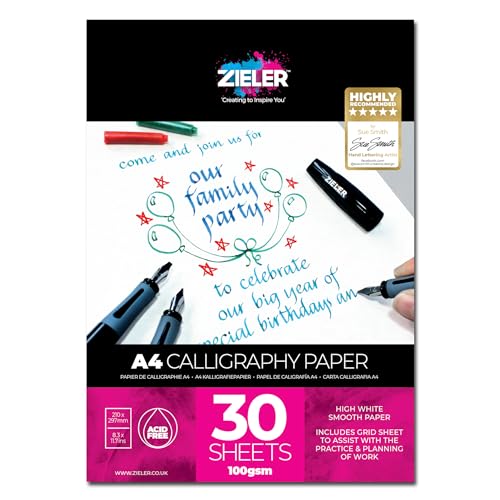Understanding the Ideal Weight of Calligraphy Paper
Calligraphy is a beautiful art form that requires a great deal of skill and patience. However, the quality of the finished product depends not only on the artist’s skill but also on the quality of the paper used. The ideal weight of calligraphy paper is crucial to achieve a perfect result. This article will explore the concept of paper weight and explain the ideal weight of calligraphy paper.
What is Paper Weight?
Paper weight is the weight of a ream of paper (500 sheets) measured in pounds (lb) or grams per square meter (gsm). The weight of paper determines its thickness, stiffness, and durability. Generally, paper weight ranges from 20 lb (74 gsm) to 200 lb (600 gsm) or more. The higher the weight, the thicker and stiffer the paper.
What is the Ideal Weight of Calligraphy Paper?
In calligraphy, the ideal weight of paper depends on the type of pen and ink used, the style of calligraphy, and the purpose of the work. For beginners, a paper weight between 90 gsm and 120 gsm is suitable for practicing different styles of calligraphy. For professional calligraphers, a weight of 140 gsm to 250 gsm is ideal for producing high-quality work with sharp lines and minimal ink bleeding.
Why is the Weight of Calligraphy Paper Important?
The weight of calligraphy paper affects the quality of the final product. If the paper is too light, the ink may bleed or smudge, making the lines appear blurry and undefined. On the other hand, if the paper is too heavy, it may not hold the ink correctly, making it more difficult to form sharp lines and curves. Using the ideal weight of paper enhances the appearance of the artwork, making it more elegant and visually appealing.
Where Can You Find Quality Calligraphy Paper?
Quality calligraphy paper can be found in art supply stores, stationery shops, or online retailers. Popular brands include Strathmore, Canson, and B&H Photo and Video. It is important to choose a brand that offers paper of the right weight, texture, and quality, to ensure that the final product meets the desired standard.






